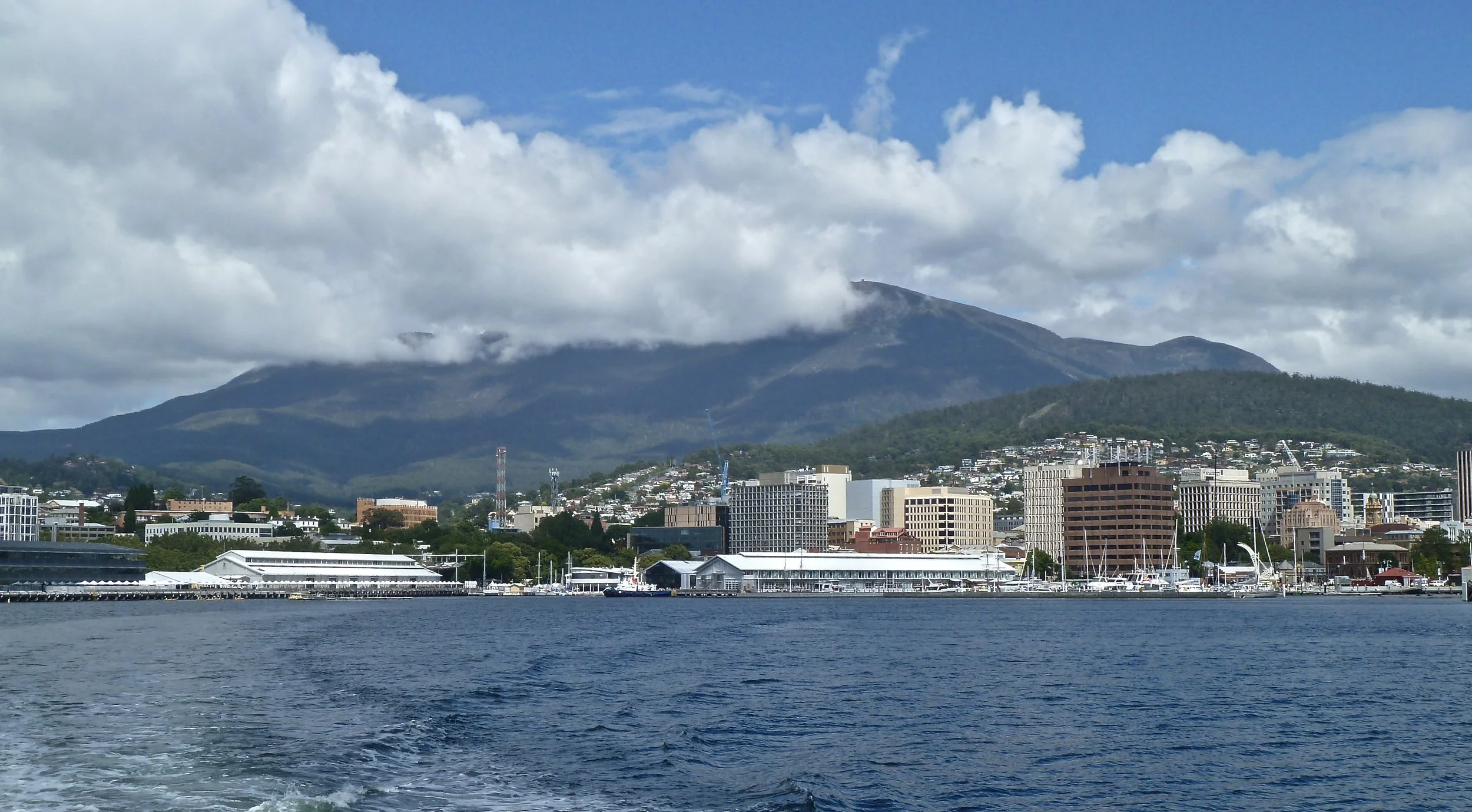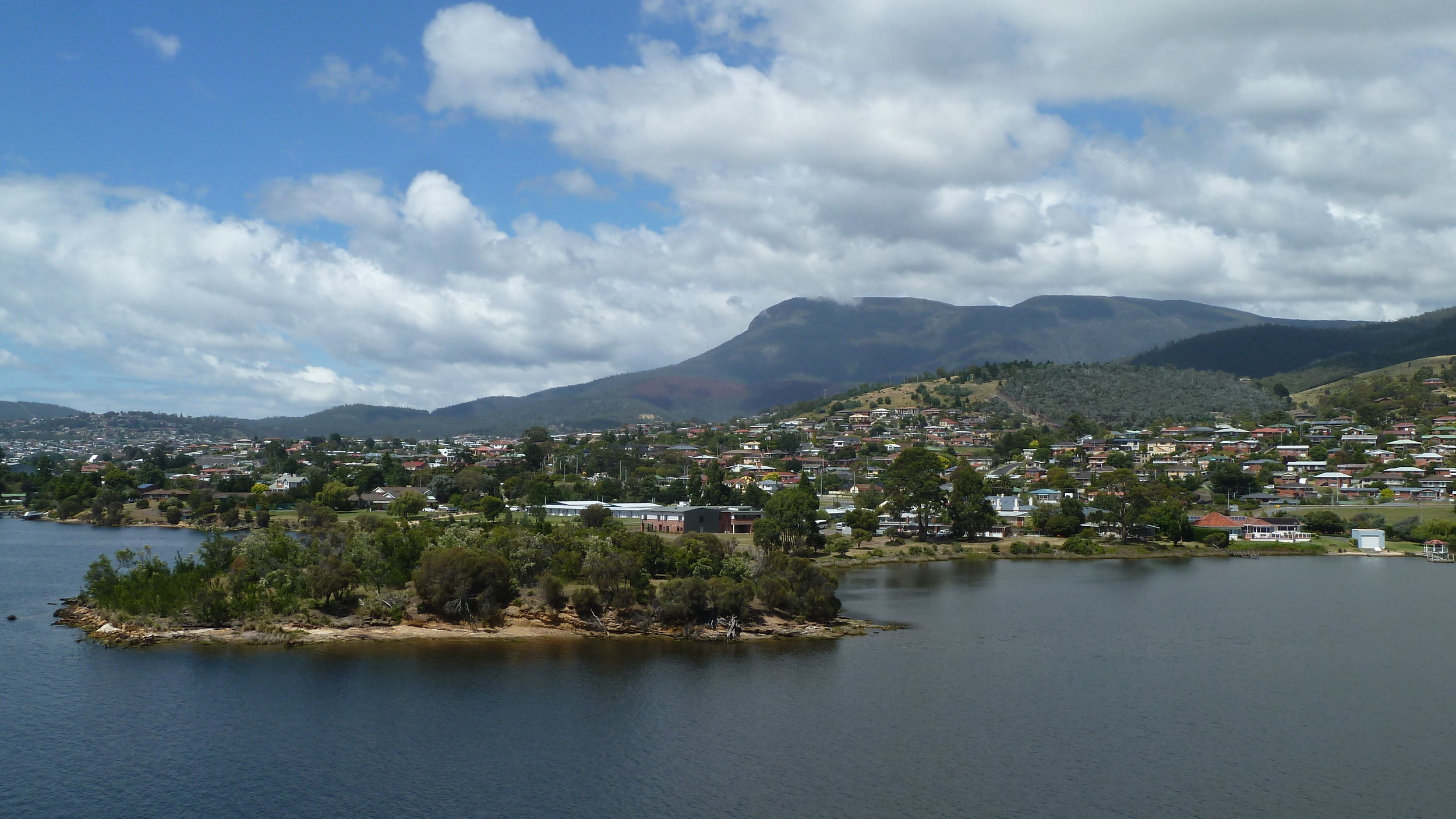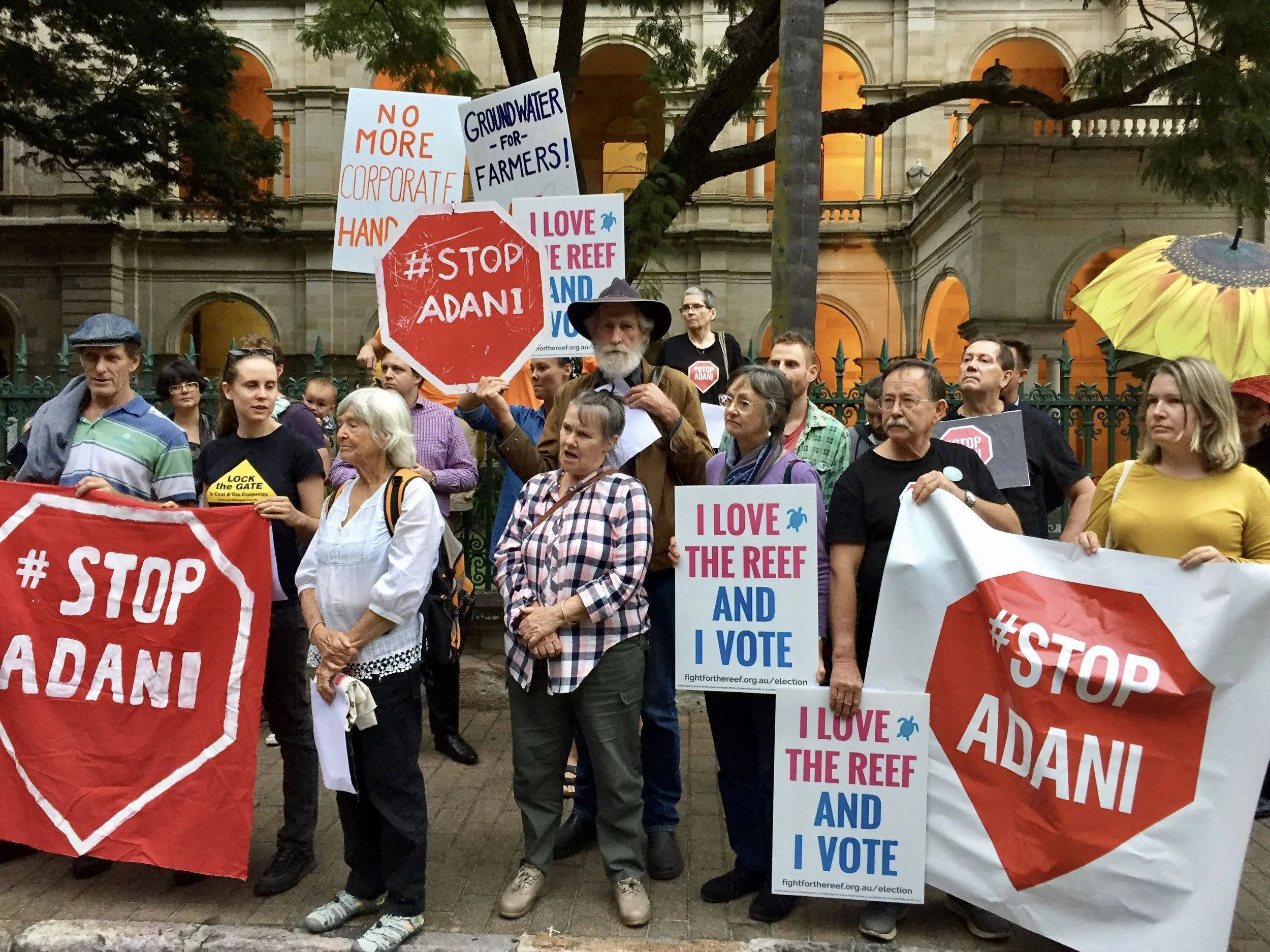Hobart, then
It would seem that I don't learn. On trips into the wild I rarely want to return to civilisation, especially not state-capital sized. So it pained me to be leaving this behind on our way from Lake Pedder to Hobart.
There was some pretty countryside beyond, however, and interesting crops such as hops to spot, especially in the broad and verdant Derwent Valley.
The sun was reluctant to appear, and, once we'd checked in and were settled in Hobart, and gone walkabout towards the port, we were soon driven back to our hotel room by heavy rain, and were relieved to have booked dinner at RACV Hobart's Charcoal restaurant. Both hotel and restaurant were good value, and I was particularly impressed by their new logo, following a $5 million refurbishment.
As we'd skirted Hobart from the airport and headed westwards for Strahan on Christmas Eve, the city looked pleasantly watery in warm sunshine. Hobart sits either side of the Derwent estuary, so waterfront is never far away. It also straddles several hills, the most imposing of which is Mount Wellington, a dramatic, often cloud-topped backdrop to city centre and port.
Images above, right and below: on approach to Hobart over Mount Wellington the day we flew to Melaleuca – in a very small plane.
The first arrivals came ashore at Sullivans Cove in 1803. Like many towns in Tasmania, Hobart began as a British penal colony, first at Risden Cove on the opposite bank of the river, but then, from 1804, Sullivans Cove developed as the heart of the settlement, and remains so today. There are wharves and old warehouses, ferries and big ships and, when we were there, remaining competitors in the Sydney to Hobart Yacht Race. People were also there for the Taste of Tasmania, a festival to celebrate the island state's food and wine. Oddly, we couldn't find the fish 'n' chips we fancied. There was lots of calamari, oysters and other seafood, trout and salmon – and lots of variations of Asian food – but no white fish such as barramundi or trevally.
I suspect I'm going to sound a little hard on Hobart. Five lanes of traffic on two roads, one in each direction, rip through the heart of the town. Many buildings are horribly utilitarian, and ugliness often abuts older, classier constructions, which makes you wonder how such developments ever got through planning. I don't have many photographs of the city, which speaks volumes.
There are some fine old buildings in the port, especially in and around Salamanca Square, where we found The Hobart Book Shop, and drank coffee in Nant Whisky Bar, which combines Scottishness with Tasmania's most notorious marsupial. We arrived in Hobart too late in the day to take advantage of the much-recommended Salamanca Market (Saturdays only). There's another great bookshop (with cafe), Fullers, in Collins Street, just down the road from where we stayed. Also close-by, we ate a wonderful dinner at Franklin, in Argyle Street. It's in a large, former industrial space softened by sheer drapes between tables and animal hides on the floor. The kitchen is open and central, and it was fascinating to watch each to his or her allotted task. The menu is imaginative, making the most of local ingredients.
Tastes of Tasmania
Polar explorer
The choppy Derwent at Battery Point
I am the only person I know who hasn't raved about Hobart's highlight, the Museum of Old and New Art (MONA). After innumerable recommendations, we booked a ferry at 11 and dinner in the wine bar, anticipating hours of wonderment and pleasure.
A huge part of the problem was that I'd picked the wrong day, all those months ago when we booked. By 4 January we'd had days of oppressive cloud and rain with minimal sunbursts, but this was gloriously sunny. We were headed underground, however.
MONA isn't a city centre gallery. It's in the suburb of Berriedale 11 km to the northwest, a more than 2-hour walk, or a 20-25-minute drive, or 30 minutes by fast ferry ($22 return), which is the infinitely preferable option unless it's one of the busiest days of the year and you're in cattle class along with people cramming smelly equally fast food.
The museum is privately owned and surprisingly inexpensive at $28 for peak season (check prices here). It's free for Tasmanians and young people under 18. It was a nice day for a ferry ride.
It's a long climb from the ferry
The visit didn't start well. I was forced to give up my (small) backpack.
'You'll have to cloak that,' said an official checking our entry.
'Cloak it in what?' I asked, obtusely. In the dictionary, under cloak, verb, there is no meaning, to deposit an item in a cloakroom, right. Behind the desk was a dire warning: 'cloaking staff only'.
There is no doubt MONA is a spectacular construction, described by Discover Tasmania as a subterranean architectural masterpiece. You work your way down to the third floor, rather than up. Winding display areas are hewn out of sandstone, but they're dark and narrow, and not the place for pushchairs (strollers). Christmas holiday crowds made them claustrophobic. There are no explanatory notes on the walls about exhibits: it would be too dark to read them; so you have to use a free gadget, pretentiously called The O, a customized iPod Touch-based guide. Embrace the technology, woman, and stop yer moaning: this is no ordinary art museum.
MONA opened in 2011. It evolved from the Moorilla Museum of Antiquities, founded in 2001 by Tasmanian millionaire David Walsh. It's located in the Moorilla vineyard, and there's a wine bar and restaurant. The museum is a showcase for Walsh's extensive collection of antiquities and modern art, and his ego looms large. His parking space is distinguished by a sign that reads 'Reserved', and underneath 'God', which is not remotely funny. He's described MONA as a 'subversive adult Disneyland'. Which reminds me of Cloaca Professional by Wim Delvoye, which has a room of its own. It's a digestive machine – sorry, installation – that turns food into excrement. You can watch it getting 'fed' twice a day and 'pooing' sometime in between. The room smells strongly of shit: we didn't linger long.
There are permanent and temporary exhibitions. We saw On the Origin of Art (November 2016 to April 2017), which was explained: 'We need art. But for what? David Walsh asked some of his scientist buddies this question. Four answers. Four exhibitions. One man's crusade to piss off art academics.' (Read more about Walsh's vision here.) Four exhibitions were curated in four rooms, each being a contributor's interpretation of the answer. The art ranged from ancient artefacts to contemporary optical illusions. Some were interesting.
In 2012, Quadrant, an Australian cultural magazine, in a piece entitled MONA's brutal banality, wrote of the museum: 'MONA is the art of the exhausted, of a decaying civilisation. Display lights and taste and stunning effects illuminate moral bankruptcy. What is highlighted melds perfectly with contemporary high fashion, design, architecture, cinema. It is expensive and tense decay.' Not just me, then. I'm sure there are many glowing reviews out there.
These are some of my pictures of MONA, in no particular order, and with few details – because I didn't start using the gadget until half way through.
Down into the depths… where Sydney Nolan's Snake mural consists of more than 1600 paintings
Untitled (White Library): 'Is this an exhibit?'
Left: Snake detail
Right: thylacines!
Spot the dog
A lovely sandstone wall
My favourite exhibits were…
Stepping inside an old master
Dots Obsession by Yayoi Kusama
Finobacci Stone's colour and tones
… and a waterfall of words, in which letters were created seemingly by concentrations of droplets. It was mesmerising.
I also liked the bar in the basement.
At the end of the art was the wine bar, and Golden Hour. This was fine communal dining, during which we talked to a father and son from Melbourne and a mother, father and young son from Holland. With recommended wines for each course, the day's ups and downs were soothed by…
Pigeon whole bread, olive oil, whipped butter & marinated olives
Sweetcorn parfait, charred asparagus & verjuice
Tasmanian salmon, green gazpacho, olives & radish
Wood smoked lamb shoulder, onion soubise & spiced oat crumb
Locally farmed roasted baby vegetables, furikake & capers
Mixed leaves, shaved fennel, tomato & sesame dressing
Local cherries and berries with lemon curd, basil ricotta & butter pastry
Between mains and dessert, we were invited outside to lie on stones on the museum's rooftop and gaze through a hole in James Turrell's Amarna installation, through which he 'harnesses the numinous potential of light and space; kind of what God would do if he decided to build a gazebo'. I'm only going to say that there were pleasing colours projected against a sunset sky.
After our visit to MONA, I was inspired to create my own art, entitled If only I could see daylight (2017). Sorry, Hobart. Maybe next time.
I did, however, enjoy Hobart's Botanic Gardens, which we visited just before leaving the state capital the following morning.
Smoke Bush
Giant Rhubarb flower and, above right, leaves
Aboriginal tribes used to hold camps here before European settlement, and there are middens in the Gardens and along the nearby shoreline. In 1806, 50 acres were granted to John and Elizabeth Hangan to be farmed, but the land was resumed in 1818 to create the Government or Colonial Gardens. Hobart's botanic gardens were Australia's second, two years after Sydney's. The Botanical and Horticultural Society of Van Diemen's Land (now the Royal Society of Tasmania) was established in 1843 and managed the gardens until they became the Tasmanian government's responsibility in 1885.
An old favourite, Serrated Banksia





















































